If you’re considering a home renovation project, then painting the interior is among your top priorities. Since it requires a significant amount of work and resources, various types of costs are associated with it. If you’re unsure, we’ll explore them here and help you budget more efficiently.
Cost to Paint the Interior of a House
There is not only one factor, but several factors that contribute to the actual final cost, which is why we explore them separately to help you understand them better.
So, let’s discover the cost:
By Square Foot
It’s one of the main factors in calculating the cost, as measuring the complex layout of the interior is challenging. The square foot measurement helps us to minimize calculation errors.
For instance, if we examine the data, which indicates that the average American home space is around 2,000 square feet, we can expect the cost of interior paint to be around $4,000-$5,000 per project or even more. Below is the cost estimation table, which you can refer to for your budget calculation.
| House Size (sq. ft.) | Cost Range |
| 500 | $1,000 – $2,500 |
| 1,000 | $2,000 – $5,000 |
| 1,500 | $3,000 – $7,500 |
| 2,000 | $4,000 – $10,000 |
| 2,500 | $5,000 – $12,500 |
| 3,000 | $6,000 – $15,000 |
| 3,500 | $7,000 – $17,500 |
| 4,000 | $8,000 – $20,000 |
By Paint Type
Since paint is the main ingredient of this project, you need to calculate the volume of paint required to finalize the costs. Let’s suppose we consider the application of latex paint, which costs $20-$35 per gallon, allowing you to cover an area of 300-400 sq. ft. There are other options available as well, including oil-based paints, chalk paints, and enamels. Here are a few types of paints you might consider:
Chalk Paint ($20–$35/gal): This paint offers a soft, matte finish with a nearly vintage appearance—ideal for furniture makeovers or achieving a shabby chic aesthetic.
Enamel Paint ($20–$35/gal): This paint is known for its hard, glossy finish, making it a super durable option for high-traffic areas, such as cabinets and trim.
Latex Paint ($15–$30/gal): The go-to for most walls and ceilings. It’s water-based, dries quickly, and is easy to clean up with just soap and water without costing you much.
Oil-Based Paint ($20–$35/gal): This one’s old-school but tough. It offers a smooth, rich finish and withstands moisture and heavy use well.
Primer ($15–$25/gal): This coat is applied at the start to help paint stick better and ensure a smooth, even finish, especially on raw surfaces.
By Surface
Each surface comes with its own unique physical properties, which means that the paint requirements vary, too! Regular wall paint is perfect for your walls, while furniture pieces like wardrobes, cabinets, and shelves require a different type of paint to make them shine at their best.
Yet, due to these differences, we have to consider both the quality and quantity of materials, which ultimately determine the final cost. For instance, the basic cost of paint is approximately $2-$5 per square foot for walls and ceilings. Below are some typical prices for different surface types.
| Surface | Cost Range | Unit |
| Kitchen Cabinets | $1 – $1.50 | sq.ft |
| Interior Doors | $50 – $100 | per door |
| Kitchen/Bathroom Tile | $4 – $10 | sq.ft |
| Trims & Crown Moldings | $1 – $5 | linear foot |
| Walls & Ceilings | $2 – $5 | sq.ft |
By Room Type
Another factor that can influence the cost of an interior paint project is the structure and type of room. The cost estimate for different rooms varies as follows:
| Room | Cost ($) |
| Bathroom | 200-600 |
| Bedroom | 200-500 |
| Dining room | 300-800 |
| Kitchen | 400-1,000 |
| Living area | 300-800 |
| Bathroom | 200-600 |
Optional, but Applicable Costs
Although we’ve covered most of the cost types associated with the interior paint project, some additional costs may be overlooked. These can include clean-up, furniture moving, surface renovation, or other tasks. So, when you’re doing the calculations, make sure to include these factors as well, because they’re also added to the final bill.
Tips on Saving Money on Interior Painting
- It’s best to purchase enough paint for your project all at once instead of getting it in smaller amounts. This approach not only helps you secure the best price from the vendor but also allows you to get a decent discount.
- Never choose cheap paints, as they may be lower in price but can cost you more in the future. High-quality paints are a reliable option and don’t demand frequent upkeep.
- Measure the area you want to paint to estimate the amount of paint and other resources required. You can consult with our specialists or measure it yourself to get an accurate measurement.
- Don’t go for luxury brands as they sell the status quo, but the product quality is similar to that of other reputable brands, which don’t cost much.
- Since every wall or surface has its own unique paint needs, choose the right type of paint specifically designed for that surface. This way, you can make the most of your materials and avoid wasting any leftover solution.
What is the Enamel Paint Cost per sq ft?
The cost of enamel paint per square foot in the USA typically ranges around $2 to $6 including materials and labor for painting projects. Specifically, high-gloss enamel paint costs about $35 per gallon, with a gallon covering 300-400 square feet, which roughly translates to about $0.09 to $0.12 per square foot for just the paint.
However, when factoring in labor and other materials, the total cost to paint with enamel ranges from $2 to $6 per square foot depending on the project size and complexity.
DIY Paint Project vs. Hiring a Professional
Lastly, we hope you understand the costing structure of an interior paint project and the factors that are associated with this job. Now, you need to consider your preferences for the material and other available options. If you’re considering taking it on as a DIY project, you can do so, but any mistake can result in substantial repaint costs.
That’s why it’s recommended to hire the professionals at JD Handy Pro LLC to get this done in one go. As our experts understand what suits each property, they provide you with tailored recommendations on how to utilize your resources more effectively. You can contact us at +15718312030 or email us at jdhandypro@gmail.com to receive an instant quote.


